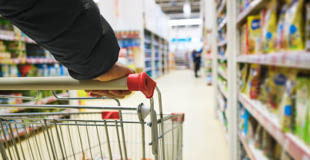Subsidiaries of Walgreens
- Duane Reade
Key Findings
- Walgreens has a written safer chemicals policy restricting dozens of chemicals of high concern, which it plans to apply initially to Walgreens- and Boots-owned brand and exclusive consumer formulated products in the baby, beauty, personal care, and household cleaning product categories. The policy does not address brand-name products.
- The company set a goal to eliminate the chemicals on its RSL from those categories of private-label products by the end of 2021. Earlier in 2020, it shared that more than 98.5 percent of Walgreens owned brand products in the categories covered by the RSL and 100 percent of Boots UK and Global Brands owned brand products in those categories were in compliance with the RSL.
- The company has also met its goal for all owned brand household cleaners to disclose ingredients on their respective product labels by the end of calendar 2019.
Recommendations for Walgreens
- The company should expand its policy to cover brand-name suppliers and additional chemically intensive product categories, and eliminate and safely replace any per- and polyfluoroalkyl substances (PFAS) that may be in the products or packaging it sells.
- Walgreens should also eliminate plastics of environmental health concern (PEHCs) from its product and packaging materials, and should take swift action to eliminate and safely replace key chemicals of concern from the beauty products of environmental justice concern (BPEJC) that it sells. The company should publicly disclose the alternatives used to replace chemicals of high concern (CHCs) after eliminating them.
- The company can also improve the policy by strengthening measures to ensure conformance with its safer chemicals policy, including conducting its own testing, requiring suppliers to test in third-party laboratories, and requiring suppliers to conduct alternatives assessments to avoid regrettable substitution. Walgreens should become a signatory to the Chemical Footprint Project and pilot it with key private label suppliers.
Grade History
How does Walgreens compare to its competitors?
Analysis of Walgreens
Oversight: Established management responsibilities and incentives
Disclosure: Requires suppliers to report use of chemicals in products to retailer
Action: Reduced or eliminated chemicals of high concern (CHCs) or plastics of environmental health concern (PEHCs) within the last three years
Safer Alternatives: Evaluates safer alternatives, avoids regrettable substitutes
Transparency: Demonstrates a commitment to transparency and public disclosure
Third-party Standards: Promotes credible third-party standards for safer products
Extra Credit:
Joint Announcement: Public commitment demonstrated through joint announcement
Continuous Improvement: Shows continuous improvement by steadily expanding safer chemicals policy
Collaboration: Actively participates in collaborative process to promote safer chemicals
Impact Investment: Investing financial resources into independent research into safer alternatives and/or green chemistry solutions


